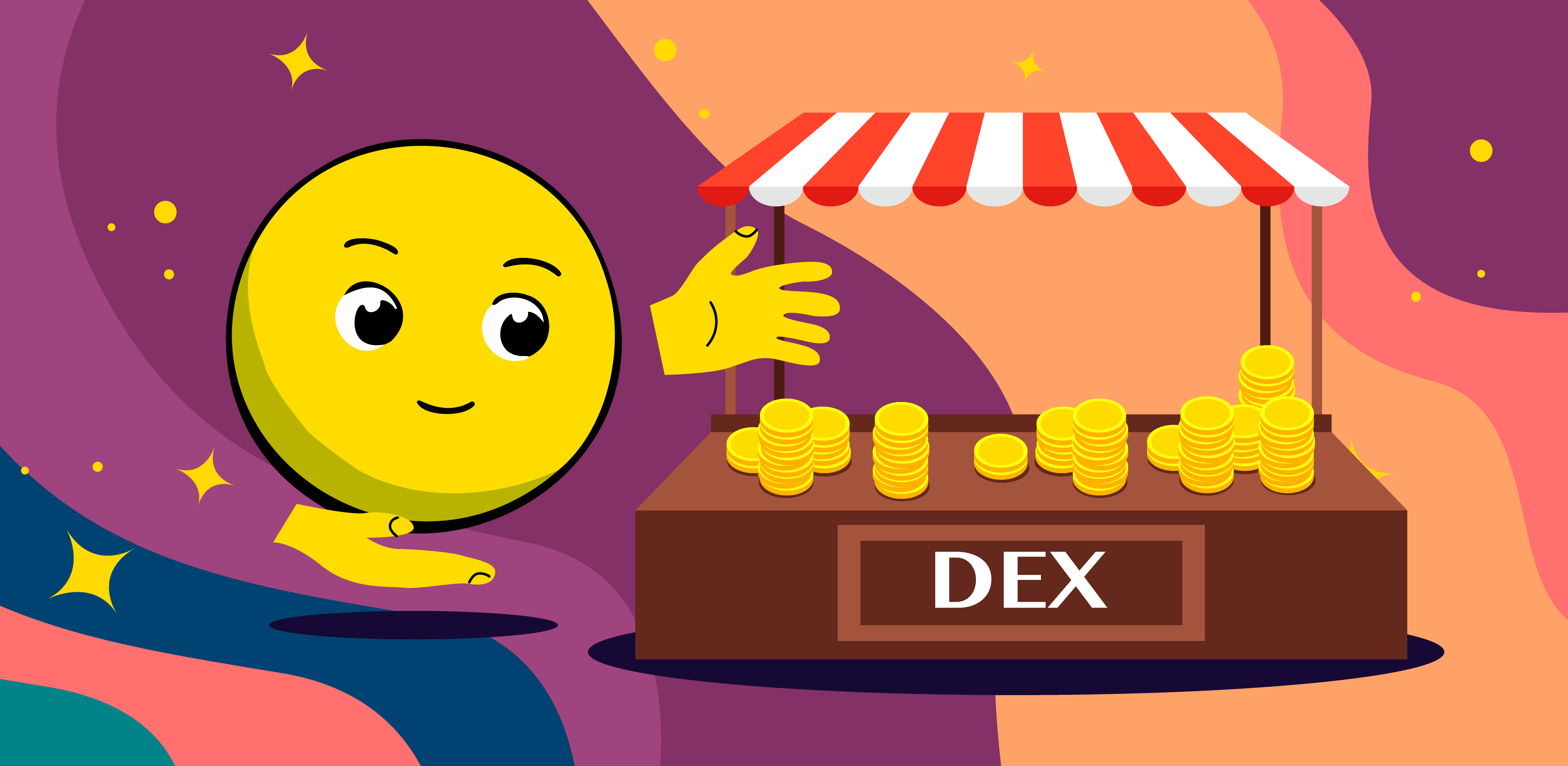
What is an IDO?
IDO or Initial DEX offering is a way of amassing financing, a relatively new fundraising model that follows the success of the DeFi. IDO is the initial offer of coins on decentralized exchanges (DEX). This is an alternative to ICOs and IEOs, but fundraising takes place through liquidity pools. Unlike ICO and IEO, where investors first buy coins of the project, and then it is listed on the exchange, in IDO, the initial sale of coins and their listing occur almost simultaneously. The main difference between these models of fundraising is that in IDO, projects do not need to pass verification by the crypto exchange. It’s worth learning how IDOs work and what the advantages, disadvantages, and prospects for the future are, which we will cover in this article.
How it works
Funds are raised using smart contracts of liquidity pools that work as automated market makers. They allow traders to exchange assets directly from the pool, without waiting for buyers or sellers. The specific exchange price is set by a complex pricing algorithm called Bonding Curves. It is based on the ratio of assets in the pool: when coins are bought, their price increases, and when they are sold, it falls. The price balance is maintained at the expense of traders. They "freeze" their assets in the pool, providing liquidity, and receiving remuneration for this. At the same time, the asset price in the pool may differ from the prices on centralized exchanges.
Formally, any DEX user can conduct an IDO so the sites select projects that end up on Launchpad platforms. When launching an IDO, developers need to follow multiple steps:
- One needs to determine the options for using the token and the system for distributing it to users.
- Next, you need to set the token issue and the number of coins for IDO.
- Then you turn to the auditors who will analyze the smart contract.
To participate in most IDOs, participants need to register in advance and enroll in the white list via social media or a website. More important websites to keep in mind when dealing with IDOs are Coinspaid, Coinlist, and Uniswap. High fees on the Ethereum network have led to projects choosing other blockchains to conduct IDOs. For example, such as Binance Smart Chain or Polkastarter. The Solana platform also introduced its launcher. Other options are Chainlink and Thorchain.
Examples of IDOs
The first-ever IDO is known to have happened in June 2019 on Binance DEX by Raven developers. The most profitable IDO at the moment is Flow from the Dapper Labs project. There has been growing public interest in IDOs ever since.
Among other major IDOs, there are Compound, bZx Protocol, mStable, SushiSwap, Shift, and ExeedMe. The coins of these projects have grown tenfold after the token sale.
Advantages and disadvantages of IDOs
+ IDO’s advantages include immediate token liquidity, instant start of trading, and lower costs for conducting it. IDOs are also suitable for new small projects and start-ups. It is decentralized and has no high fees. IDO can be used not only by companies from the DeFi sector but also by centralized ones. Due to lower costs than ICO and IEO, the new method of attracting funding is suitable for small crypto projects. In case the IDO token is a governance token, it gives its holders the right to vote and control the direction of development of the basic protocol. If it is a native token on a DEX exchange, for example, users can also get discounts on making transactions on the platform.
- Even though projects issue tokens that are already backed by DEX liquidity pools and the tokens are guaranteed to be on the crypto market without the need to wait for listings, this doesn't necessarily mean that the token will be successful. Before taking part in any IDO, one needs to study the project and be prepared for all the risks since sometimes participating in IDOs can cause serious losses. The trading volumes of decentralized crypto exchanges are actively growing, but they are still significantly inferior to classical platforms. At the same time, DEX is more difficult to use, which makes it accessible to a limited number of technologically advanced users.
What Does Participating in an IDO Mean for a Crypto Investor: a Brief Run-Through
We’ve looked at the advantages and disadvantages of going through this process mostly from the token issuer’s standpoint, but what about an ordinary crypto enthusiast wanting to get into a new project? There are some peculiarities associated with IDO compared to other kinds of initial offerings like ICO.
- As we said before, all buyers usually need to be whitelisted. This means, on the one hand, somewhat forced participation in the IDO token community. On the other hand, it’s not a bad thing; besides, the whitelisting mechanic can facilitate a more honest asset distribution, as it means less frenzy and more order.
- Speaking of honest distribution: with IDOs, there are often additional measures against the whales, helping even small investors to get their share before everything is quickly snatched by just a few people;
- The tokens are usually listed immediately after an IDO, meaning that the investors can trade their tokens without waiting. If a user chooses to do so, they can use the same platform that handled the IDO, or move to the other platforms they’re used to — an exchange aggregator would be one way to do that.
Conclusion
Overall, IDO is a new way of attracting financing to cryptocurrency projects that focuses on transparency and being easy to use. They majorly depend on DeFi and its success. In comparison with ICO and IEO, IDO projects do not have to pay hefty sums for listing on the stock exchange and conduct lengthy discussions with regulators in different countries. Some claim that IDO is the optimal option for entering the DeFi space and gaining the trust of the DeFi market participants. This can be illustrated by already existing examples like Compound, bZx Protocol, mStable, SushiSwap, Shift, and ExeedMe. Undoubtedly, IDO should go down in the history of the crypto economy and will launch new opportunities in the DeFi sector.

